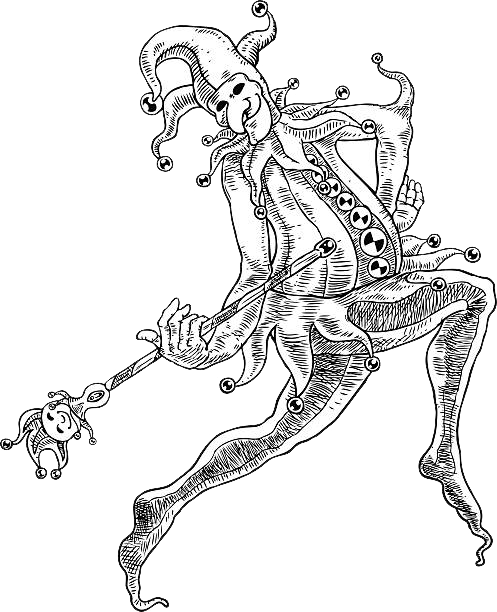A
Appendix A:
Musical Contextualization
1) All Mortal Flesh Keep Silent
- This is an adaptation of a traditional Byzantine cherubic hymn composed in Greek. It probably antedates the rest of the liturgy and dates back at least to AD 275, with local churches adopting arrangements in Syriac. As the title suggests, it adopts the biblical adage of passivity and submission: “Fear of the Lord is the beginning of wisdom.”
- This piece uses a Torch implementation of SampleRNN: An Unconditional End-to-End Neural Audio Generation Model and is trained on the litany of different versions of the song manually scraped from the web. The model is underfitting its data and is thus unable to capture the relationship between the input examples and the target values. The resulting accompaniment gives a ghastly accompaniment to a dulcimer tuned to a psaltic Byzantine mode derived from enharmonic genus. It is similiar to the equal-tempered scale except that the octave is divided into 72 “commas”.
- This piece aims to show that much of the emerging public relations narratives around artificial intelligence use theological analogies to instill fear, impotence, and foreboding inevitability. These campaigns typically take on a deterministic, ecclesiastical tone that invokes theological concepts like the Singularity, etc. This subverts agency and diverts attention away from the massive data centers and surveillance aggregators that aren’t held accountable for breaking the law. This narrative also naturalizes power as if it happened on its own without human intervention or is occurring by divine right. In reality these are carefully planned, massive engineering and investment projects and are anything but natural.
Byzantine
Enharmonic Scale in both Psaltic and staff notation.
A special signature (Martyria) is written to indicate the mode and starting pitch. The modulation signs (Phthorai) are written to indicate the transition from one mode to another.
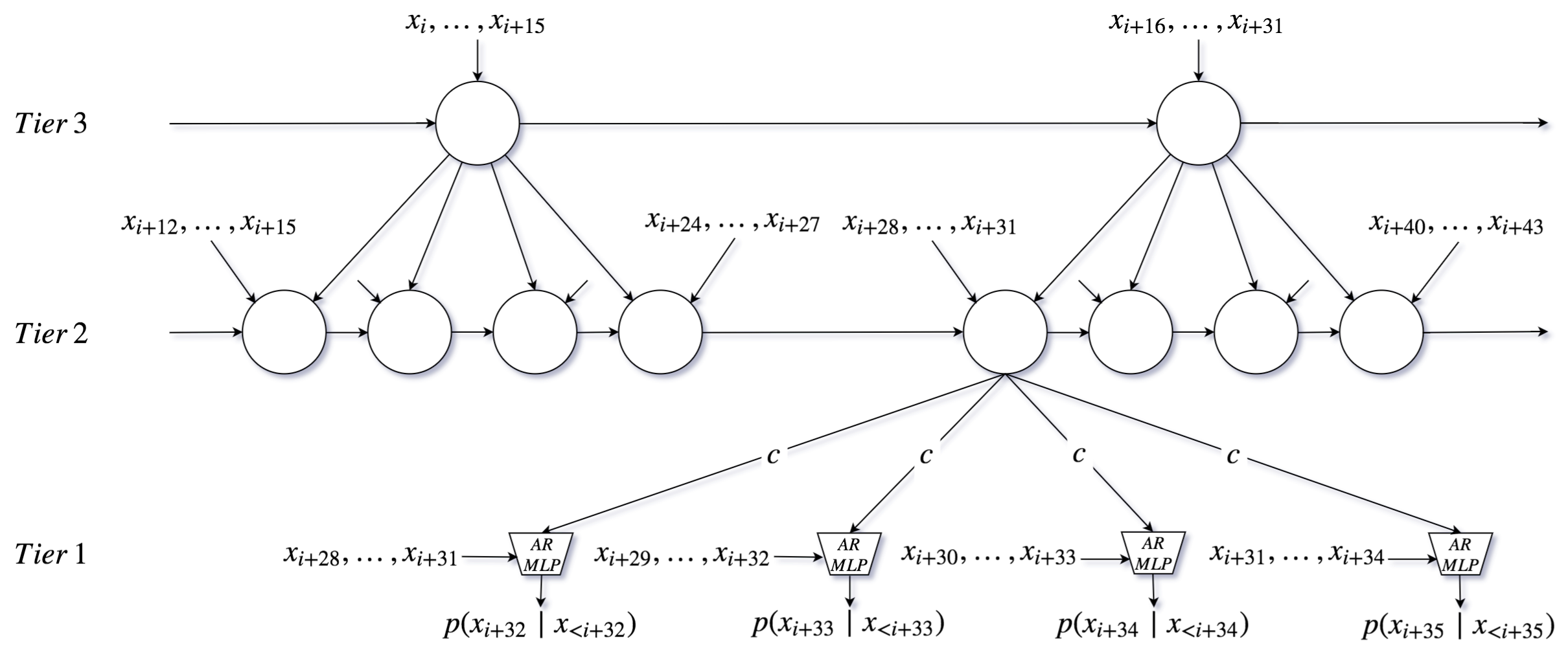 Torch Implementation of SampleRNN: An Unconditional End-to-End Neural Audio Generation Model. Image Credit: Richard Assar [2018]
Torch Implementation of SampleRNN: An Unconditional End-to-End Neural Audio Generation Model. Image Credit: Richard Assar [2018]2) Data Center Jester’s Requiem
- Medieval minstrels were musicians, jugglers, acrobats, singers, and/or fools. Frequently they were retained by royalty and high society as entertainers and to tell the stories of the kingdom.
- This is a Keras LTSM RNN implementation trained on the transcribed MIDI data from this song. Subtle variations were played in accompaniment for the gittern97, a medieval predecessor to the baritone guitar tuned in ascending 4ths. European music from 1500 to 1900, made use of the meantone, called 1/4-comma meantone. A pure minor third is supposed to have a frequency ratio of 6:5. For example, if C# vibrates at 550 cycles per second, E should vibrate at 660. A 6:5 ratio interval is 315.64 cents wide. None of the minor thirds in this meantone are quite that wide; most of are 310 cents.
- It has been said that “Capital is dead labor” and a requiem is a mass for the dead. This requiem is a repose for aesthetic value in the age of the monolithic platform. This song mourns the music that is deadened by relegating it to analytic preferences for advertisers. It is a lament for the emotive qualities of music being flattened into a mood stabilizer; tears for the neutering and repackaging of music as a streaming utility for productivity. It is an ode to the communities that supported the minstrels who created the music in a locale only to have their context stripped, value extracted, and venues economically decimated.
The gittern was a popular instrument with court musicians and minstrels, is considered ancestral to the modern guitary. It first appears
first appears in literature and pictorial representation during the 13th century in Western Europe. Image Credit: Jan van Eyck (ca. 1430)
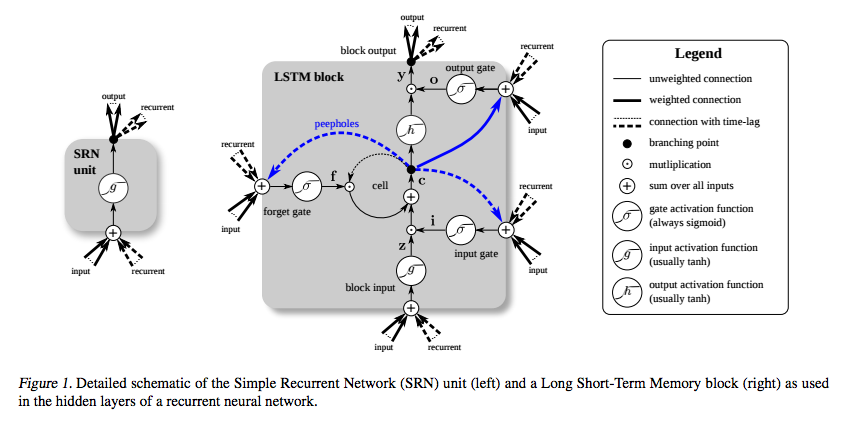
Diagrams of functional logic inside a Recurrent Neural Network (RNN) and Long Short-Term Memory blocks nested within hidden layers of an RNN. Image Credit: Skymind [2019]
3) MIDIval
- Under Feudalism the medieval lords & scribes (managers & programmers) cultivate, legitimize, and reify the knowledge systems of the kingdom (company). These scribes take order from the monarchs (CEOs) presiding over the kingdom (company) and its wealth from which the serfs (users, netizens) temporarily lease from the fiefdoms (platforms). The court jesters’ and minstrels’ (the creative class) role is to entertain the kingdom and hypostatize the absolute power through aesthetics (marketing, branding, PR, streaming content).
-
MIDIval makes use of LSTM (Long Short-Term Memory) technique from Google’s Tensorflow Magenta implementation. LSTM are recurring neural networks that are well-suited for classifying, processing and making predictions based on time series data. This was the choice for this piece because of its ability to discern larger musical phrases. The was trained on ~9GB of pre-Renaissance lute music edited into short phrases and generated the harmonic structure in segmented phrases of MIDI data.
- The aesthetic (part machine, part minstrel) was to portend of the imminent potential re-emergence of platform monarchism. Aestheticizing this generative process serves as an admonition of the return to feudal stratification of society that deep learning is rapidly constructing without the consent of society and to call attention to the strong possibility that without immediate intervention we could return to a pre-Enlightenment class structure over the course of a generation.

Images of Music Transformer: Generating Music with Long-Term Structure. Image Credit:
Cheng-Zhi Anna Huang [2019]
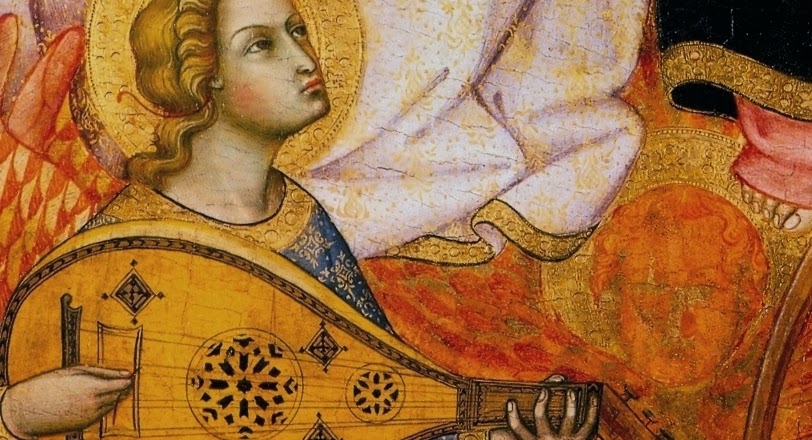
The lute itself was introduced into Europe by the Moors when they invaded Spain in the 8th century. Its popularity increased when the Crusades escalated contact with the Arabs (c. ll00). The name, in fact, probably derives from the Arabic word oud. Image Credit: Hans Memling (ca.1489). Bruges, St John’s Hospital Museum.
4) Lord Tensor’s Guardian of Forking Paths
- Lord Tensor muses on Jorges Luis Borges’ Garden of Forking Paths, a short story touted as a fictional roadmap using during the conception of early information systems. Its allegorical use of labyrinthine gardens as self-referential semiotic structure has been cited as an precursor to hypertext by media theorists.
- Written for Sudanese harp, GANSynth (a TensorFlow implementation) and MIDIRNN, this song joyously explores the rare blissful interplay of human and machine. My voice and vocaloid synth controlled by AI accompany a pair of pleasant melodies made by harp and GANSynth.
- Admittedly this piece is a wistful reminiscing of the gleefully, naive aesthetic of Richard Brautigan’s poem All Watched Over by Machines of Loving Grace where humanity lives in a garden of cybernetic co-habitance with machines. This is the long forgotten blissful dream of harmonious utopia of a synthesis of organic and digital where robotic butterflies pollinate the flowers in the earthly garden. This tries to ensnare the dwindling glimpse of the waning optimism of such an world that has evaporated. As we’ve observed, the labyrinthine garden of forking paths is now overseen by guardians and gatekeepers, Lord Tensor.
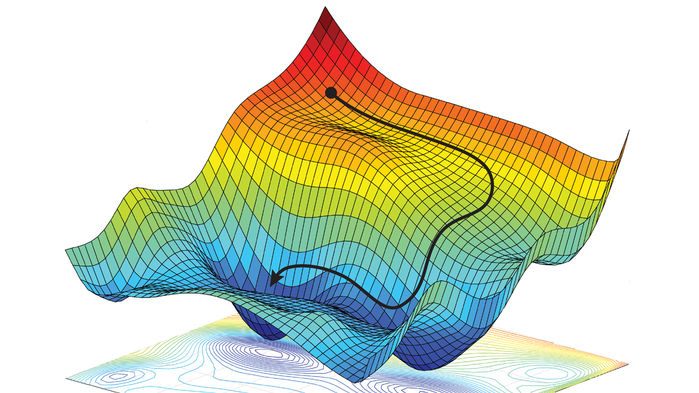
Visualization of gradient descent, an optimization algorithm used to minimize some function by iteratively moving in the direction of steepest descent as defined by the negative of the gradient. In machine learning, we use gradient descent to update the parameters of our model. Image Credit: Science [2018]
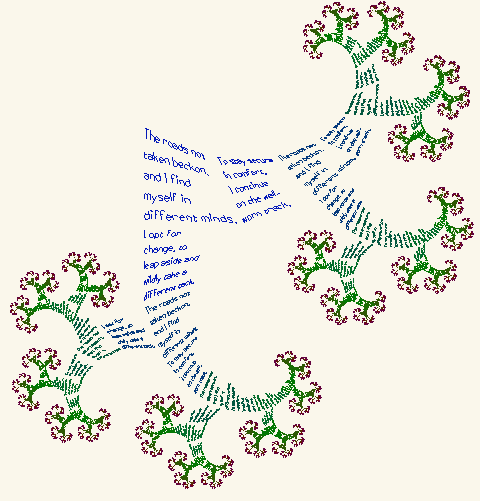 Semiotic fractal based on Borges’ poem written in visual basic. Image Credit: Ned May: El Jardín De Senderos Que Se Bifurcan [2013]
Semiotic fractal based on Borges’ poem written in visual basic. Image Credit: Ned May: El Jardín De Senderos Que Se Bifurcan [2013]5) Archonic Madrigal
- The Madrigal was a common choral form in the European middle ages. Traditionally, polyphonic madrigals are unaccompanied. Madrigals originated in Italy during the 1520s.
- This madrigal used WaveGAN to fully resynthesize generative spectral information in the sample domain (20.5kHz). It was trained on >6GB of madrigals scraped from the web.
- This composition makes use of some spectral spectres and ghost-like digital vocal artifacts. In homage to the 16th century form the subject of this piece is a re-haunting of arcane vocal music. It’s vaguely familiar, but alien aesthetic elucidates a chilling post-human reanimation of a dead medieval artform via deep learning fast fourier transformation.
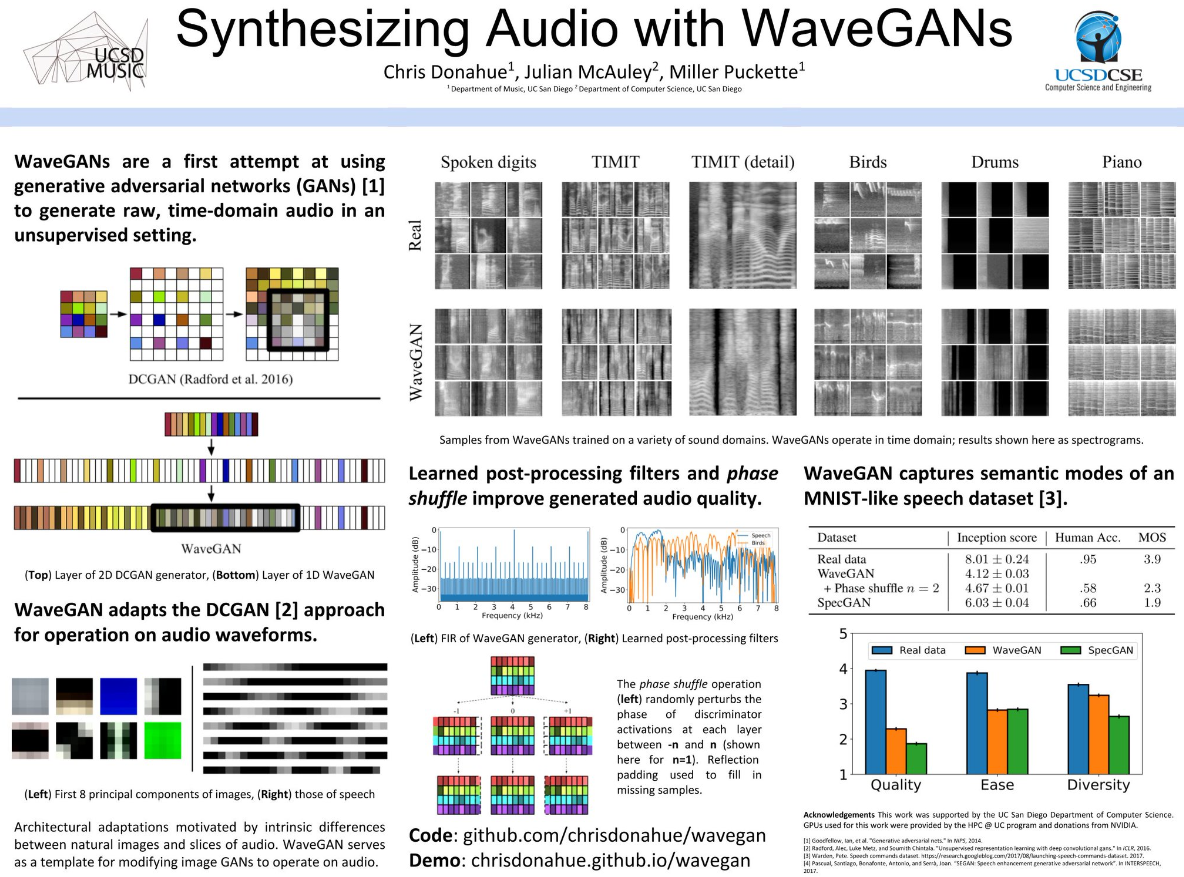
WaveGAN is capable of synthesizing one second slices of audio waveforms with
global coherence, suitable for sound effect generation. Image Credit: Chris Donahue
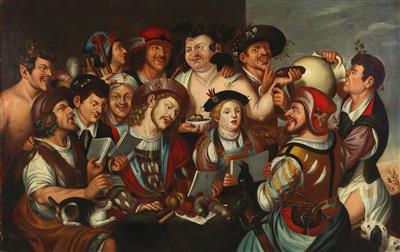 Image Credit: Niccolò Frangipane, Madrigal [1563]
Image Credit: Niccolò Frangipane, Madrigal [1563]6) Call & Response
- In music, a call-and-response is a succession of two distinct phrases usually written in different parts of the music, where the second phrase is heard as a direct commentary on or in response to the first.
- Google’s Magenta and lyre were used to create an improvisational feedback cycle illustrating an iterative learning system. This piece wasn’t performed in real-time and was re-trained after each phrase to foreground the developmental process of the algorithm.
- In the context of this project this call-and-response is a reflection on the human’s entanglement with computer networks. This “feedback duet” depicts a process of developmental learning and aims to portray that these algorithms aren't only learning from us but are actually changing how we behave. Integrating time as a function begets learning; this movement tends to structure change from premises to results: input to output. Learning is not reasoning. Learning is information ordering beyond just the construction and validation of premises. It seems to be something more like pattern recognition, prediction, and repetition.
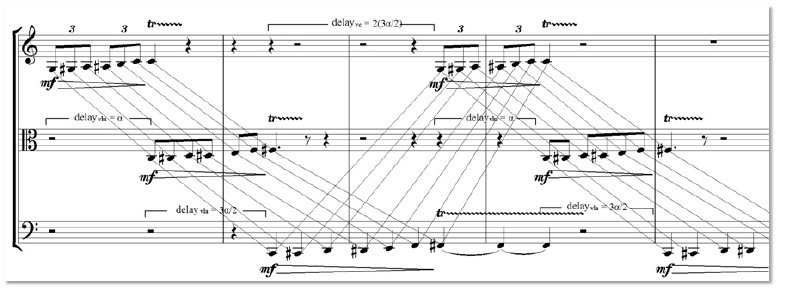
Score indicating the deep learning process of inferential transference between instruments
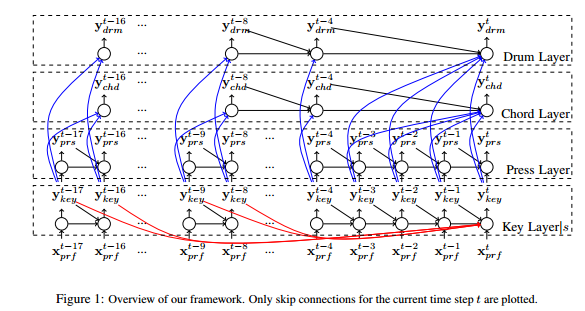 A hierarchical RNN
Image Credit: University of Toronto [2017]
A hierarchical RNN
Image Credit: University of Toronto [2017]7) Hyperparameter
- In the luthiery of stringed instruments the tuning pegs are used to hold a string in place. They are turned to introduce or release tension to the string; this tightening or loosening of the string brings its pitch into the desired range.
- Composed for lyre, human voice, formant synthesis, and Tensorflow Magenta, this piece makes use of LTSM to analyze the longer phrasing structures to create idiomatic correlations with the human performance.
- This song is entitled Hyperparameter because in deep learning these are the ‘tuning pegs’ of the algorithms. These are the optimization functions for modifying an algorithm’s output. These are the facets of the algorithms that need transparency and regulation. Many of the hyperparameters are tuning for outcomes that aren’t aligned with common interest or public good and aren’t subjected to the rule of law because they are considered private property. This ethical crisis needs to be rectified with legislative oversight and regulation immediately. The criteria for what can be optimized for needs to be folded into a democratic process so these parameters aren’t tuned to optimize out human rights or social good because they impinge upon profit motives.
Rober Fludd’s revision of his celestial monochord based on Johannes Kepler’s Music of the Sphere. Revisions include new cabalistc and mystical elements. Image Credit: Robert Fludd [1623]
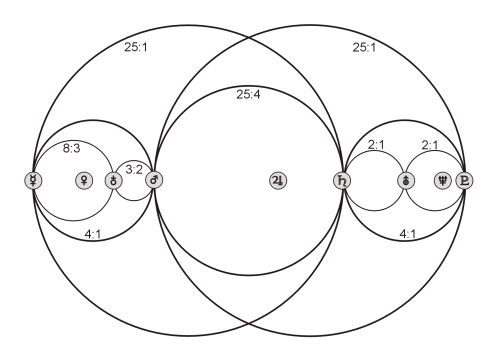 Harmonic relationships in Pythagorean Musica Universalis
Harmonic relationships in Pythagorean Musica Universalis Image Credit: Paul Calter [2009]
8) Reclamation Hymn
- Under the feudal system guilds were formed as associations of artisans or merchants to oversee the practice of their craft and trades. The earliest types of guild formed as a confraternities of tradespeople. They were organized in a manner something between a professional association, a trade union, a cartel, and a secret society. Pre-dating the labor movements that emerged during industrial capitalism guilds served as formal methods of organizing to reclaim a semblance of agency under a system of absolute monarchy.
- In addition to lyre and my voice, this hymn makes use of a multiple machine learning algorithms: GANSynth and MIDIRNN. These are used to control formant synthesis and physical models of strings.
- Simply, this is a hymn of hope. It serves as a sonic signifier for reclaiming a semblance of agency in the sea of emerging and troubling complexity outlined in this essay. This hymn is for the seizing the algorithms of possibility. However, when considering the odds of overturning the sovereign rule ― this act of hope is for the Fool. This song is sung for those who remain foolish against all odds. The first telescopes were built by Dutch lensmakers in the Netherlands to gain commercial advantage by seeing ships on the horizon, but were later turned on the celestial bodies for a world of exploring the heavens. This historical resituating of commercial technology into one of celestial science exemplifies this project’s ambition.
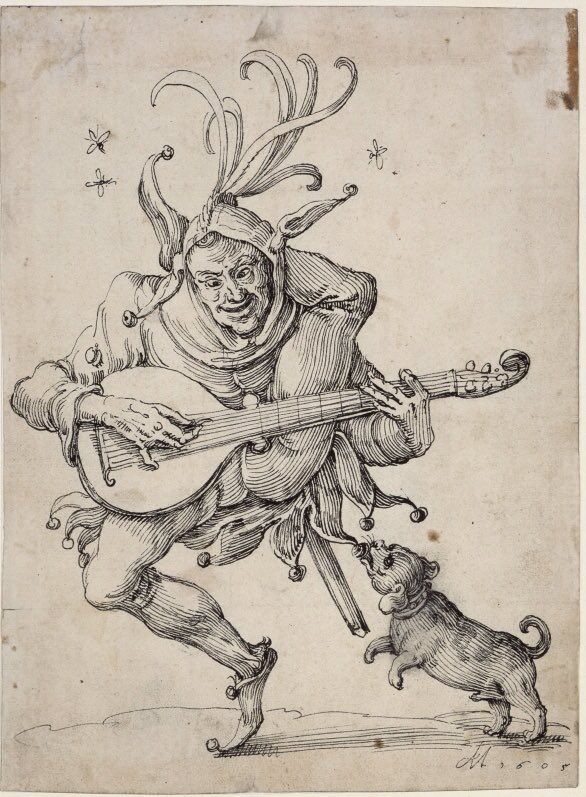
Image Credit: Lute playing Fool, Anton Möller der Ältere [1640]
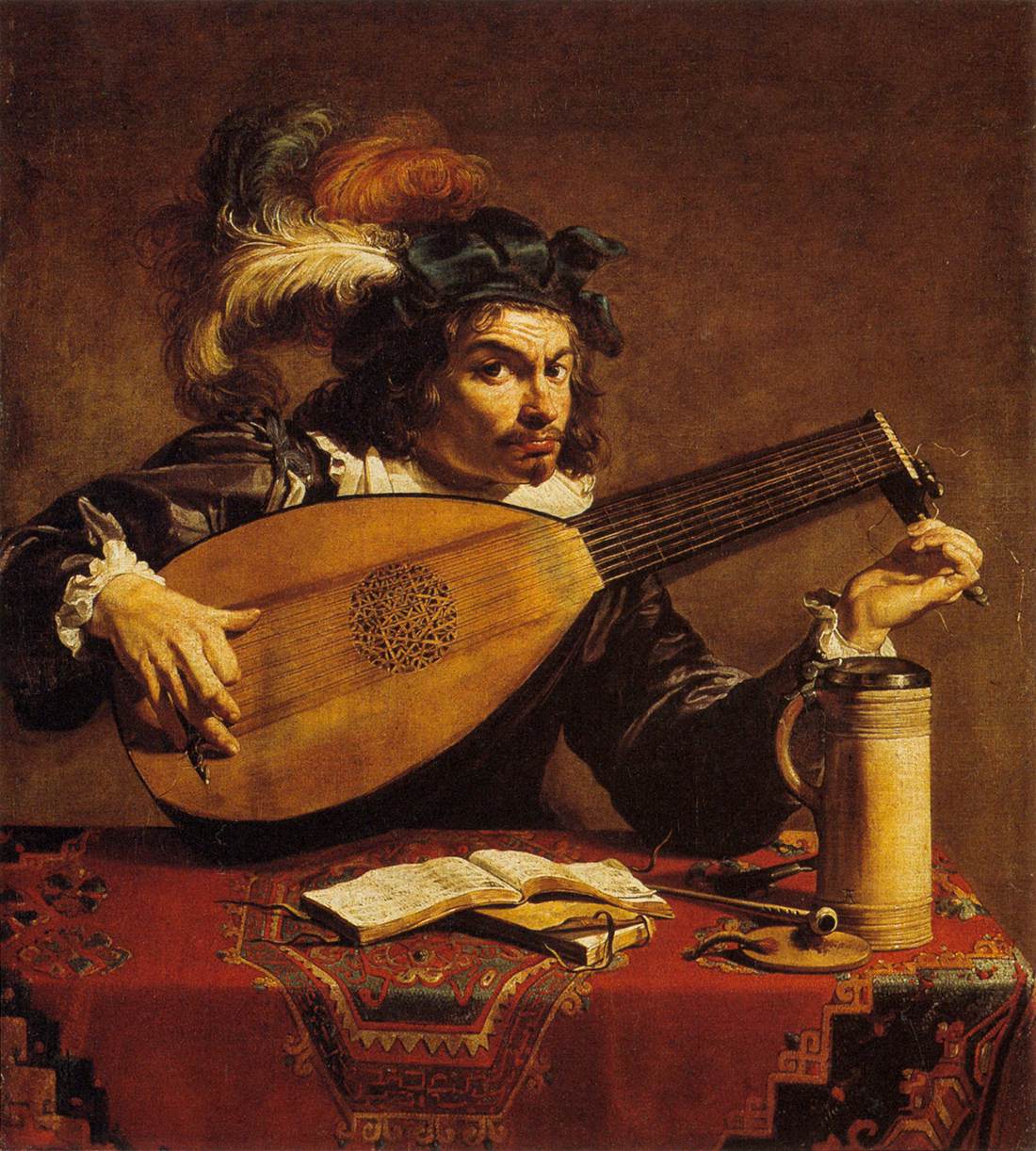 Image Credit: The Lute Player, Bartolomeo Manfredi [1620]
Image Credit: The Lute Player, Bartolomeo Manfredi [1620]96 "Formant Tuning in Byzantine Chant." https://speech.di.uoa.gr/sppages/spppdf/SMC2013_Proceedings_formant%20tuning.pdf
97 "The Gittern: A Short History" https://earlymusicmuse.com/gitternshorthistory/
